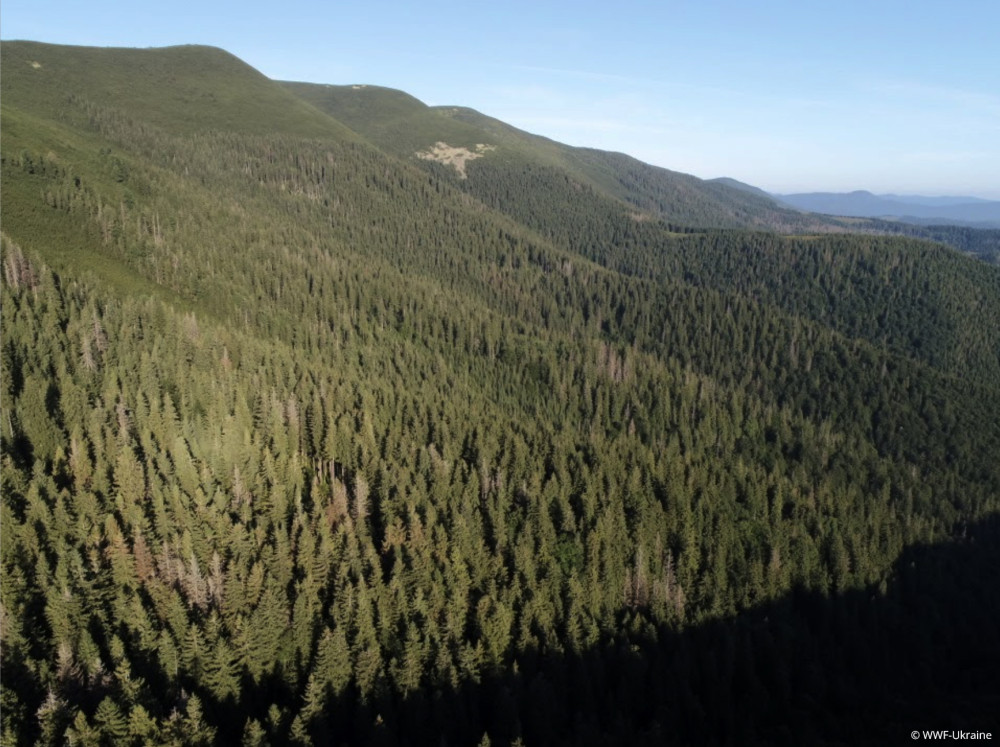A significant milestone in environmental conservation has been reached as over 200 hectares of old-growth forests in the Arshytsia mountainous massif, located on the northeastern slopes of the Arshytsia ridge in the Ukrainian Carpathians, are slated to be designated as a state-level forest reserve. This transformative decision, spearheaded by WWF-Ukraine and endorsed by the State Enterprise “Forests of Ukraine,” marks a crucial step toward safeguarding one of the oldest forest clusters in the Carpathians.
The establishment of this forest reserve of national importance underscores a collective commitment to preserving the rich biodiversity and natural heritage of Ukraine. The forthcoming reserve will encompass a diverse array of ecosystems, including old-growth forests boasting trees over 300 years old, prominently featuring the majestic white fir alongside beech, fir, and spruce. Such ecosystems are reminiscent of the untouched wilderness that once characterized the Gorgan region before human intervention altered its landscape.
 The initiative to grant protected status to the Arshytsia forest area has been a culmination of years of dedicated research and advocacy. Beginning in 2018 with pioneering expeditions led by WWF-Ukraine, subsequent field studies in August 2021 confirmed the exceptional conservation value of these old-growth forest massifs. These efforts have led to the discovery of numerous rare species, reaffirming the resilience and ecological significance of the forest ecosystem. Notable findings include the presence of the three-toed woodpecker, long-eared owl, fire salamander, and even the elusive Carpathian blue slug, underscoring the biodiversity hotspot that the Arshytsia massif represents.
The initiative to grant protected status to the Arshytsia forest area has been a culmination of years of dedicated research and advocacy. Beginning in 2018 with pioneering expeditions led by WWF-Ukraine, subsequent field studies in August 2021 confirmed the exceptional conservation value of these old-growth forest massifs. These efforts have led to the discovery of numerous rare species, reaffirming the resilience and ecological significance of the forest ecosystem. Notable findings include the presence of the three-toed woodpecker, long-eared owl, fire salamander, and even the elusive Carpathian blue slug, underscoring the biodiversity hotspot that the Arshytsia massif represents.
“Preserving our natural heritage, including forests, is a priority for WWF-Ukraine in the context of post-war recovery, as love of nature is part of the Ukrainian national identity. That is why we will continue to work actively to increase the share of protected areas in Ukraine and bring it to the European level of 30%, which is currently less than 7%, including the territories destroyed by the war,” says Bohdan Vykhor, CEO of WWF-Ukraine.
Indeed, the move to protect old-growth forests aligns with broader European initiatives such as the European Forest Strategy, which aims to preserve all such forests by 2030. For Ukraine, this endeavor takes on added significance amidst the challenges posed by war, with a significant portion of its natural reserve fund damaged or under occupation.
For more information, please contact:
Yuliia Novoseltseva
Forest Communicating Officer
e-mail: ynovoseltseva@wwf.ua
+38 063 756 62 93




